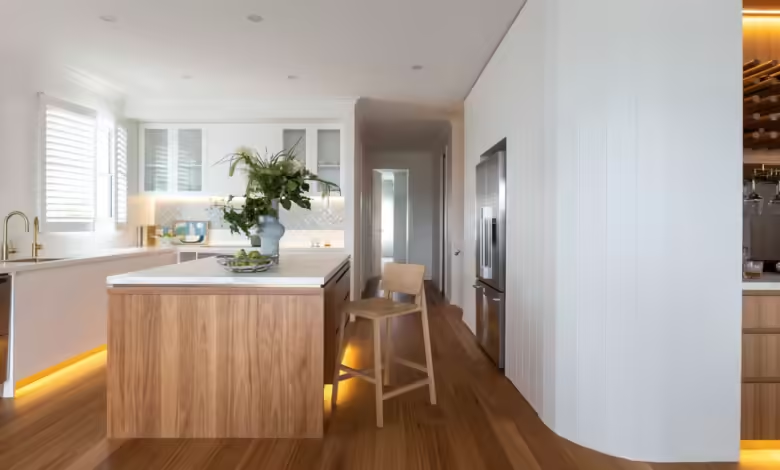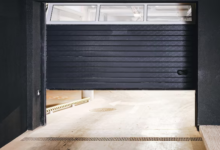How to Budget for a Home Remodel Without Overspending?

Home remodeling is an exciting project that can transform your living space, increase the value of your home, and make it more functional for your needs. However, without careful planning, it can also lead to unexpected expenses and financial stress. Creating a well-thought-out budget is essential before starting any renovation work in Saint Johns, FL, to avoid overspending. A clear budget helps you prioritize your remodel, track expenses, and get the most value for your investment. We will explore practical strategies to help you budget effectively for a home remodel without overspending.
Strategies to budget effectively for a home remodel
- Setting Clear Remodeling Goals to Guide Your Budget
Before diving into the financial aspects of your remodel, it’s important to define your remodeling goals clearly. Understanding what you want to achieve with the remodel will guide how much you need to allocate for each aspect of the project. Are you looking to update a single room, or do you plan to overhaul your home? Do you prioritize aesthetics, functionality, or both? These questions can help shape your budget and prevent you from overcommitting financially.
Once your goals are set, breaking down the remodel into specific tasks is easier. For example, if you focus on remodeling a kitchen, you’ll need to consider the cost of new appliances, cabinets, countertops, flooring, and plumbing. On the other hand, a bathroom remodel may focus on new fixtures, tiles, and lighting. By narrowing your scope, you ensure that your budget reflects your priorities and keeps the project within manageable financial limits.
Having clear goals also makes it easier to resist adding unnecessary items to the project, which can quickly drive up costs. Stick to what’s essential for achieving your remodeling vision, and avoid getting sidetracked by costly features that may not add significant value to your home.
- Researching Costs and Getting Estimates for Better Planning
Once you’ve defined your remodeling goals, researching costs is the next crucial step in setting a realistic budget. Understanding the average cost of materials, labor, and services will help you accurately estimate what you need to spend. Research online, visit local home improvement stores and speak to contractors to understand the price ranges for your desired remodeling features.
For larger projects, obtaining multiple quotes from contractors is essential. Each contractor may have a different pricing structure, so comparing estimates can help you determine what is reasonable for your project. Remember that the lowest quote isn’t always the best option—sometimes, a higher estimate includes higher-quality materials or better workmanship.
In addition to contractor estimates, don’t forget to factor in permits, inspection fees, and potential unforeseen costs. Some remodeling projects require building permits, which come with additional fees. Budgeting for these upfront can prevent unexpected expenses from derailing your plans.
With a well-researched understanding of costs, you can set a realistic budget that covers all aspects of the remodel, leaving little room for surprises. This approach ensures that you are prepared for the financial commitment without overspending.
- Prioritizing Expenses to Stay Within Budget
When planning a home remodel, it’s easy to get caught up in the excitement of upgrading every aspect of your home. However, to avoid overspending, it’s essential to prioritize your expenses. Start by identifying which remodel aspects are non-negotiable and focus your budget on these key areas. For instance, if you’re remodeling a kitchen, upgrading old appliances or fixing outdated plumbing might be your top priority, while aesthetic changes like new countertops can be deferred if necessary.
Prioritizing also means determining where you can compromise. In some cases, high-end finishes may look appealing but are unnecessary to achieve a functional and attractive space. Consider choosing more affordable materials or finishes that still meet your style preferences without breaking the bank. For example, laminate countertops can mimic the look of stone at a fraction of the cost, freeing up funds for other critical remodel areas.
You maintain control over the project by clearly defining which parts of the remodel take priority and where you’re willing to cut costs. This strategy helps you stay within budget and prevents overspending on less critical elements.
- Building in a Contingency Fund for Unexpected Costs
One of the most important things to remember when budgeting for a home remodel is that unexpected costs are almost inevitable. Whether it’s an unforeseen plumbing issue, outdated wiring that needs replacing, or material shortages, unplanned expenses can quickly arise. To avoid financial stress, it is crucial to build a contingency fund into your remodel budget.
A common recommendation is to set aside 10-20% of your total remodeling budget for unforeseen expenses. This buffer provides a safety net that allows you to handle unexpected issues without having to dip into your savings or take on additional debt. If everything goes according to plan and you don’t use the contingency fund, you’ll have extra savings, but if problems arise, you’ll be financially prepared to address them.
Having a contingency fund is not about expecting the worst but rather about being prepared for the unexpected. It ensures that your remodel stays on track without overspending, even when surprises occur.
- Keeping Track of Expenses to Stay on Budget
Once your remodel is underway, tracking your expenses is key to ensuring you don’t overspend. Tracking every expense—whether for materials, labor, or permits—allows you to see how your spending compares to your original budget. This can help you adjust as needed, such as cutting back on less essential items if you’re approaching your spending limit.
Various tools are available to help track expenses, from simple spreadsheets to budgeting apps designed specifically for home renovation projects. These tools make it easy to categorize your expenses, keep track of receipts, and monitor how much you’ve spent versus how much remains in your budget.
Regularly reviewing your expenses helps you stay informed about where your money is going, which helps prevent overspending. It also allows you to make more informed decisions as the remodel progresses, keeping the project within financial limits.
Budgeting for a home remodel carefully balances planning, prioritizing, and staying flexible. You can successfully remodel your home without overspending by setting clear remodeling goals, researching costs, prioritizing expenses, building a contingency fund, and keeping track of your spending. Financial discipline ensures that your project stays on track and that you can enjoy the results of your remodel without the burden of unnecessary debt. With a thoughtful approach to budgeting, you can transform your home to meet both your aesthetic desires and your financial needs.





